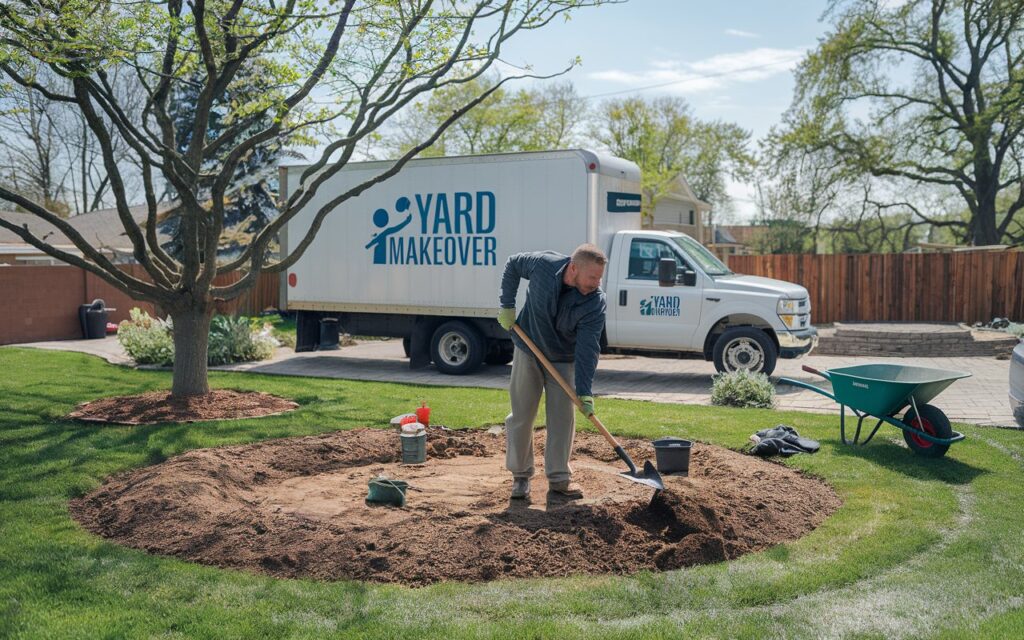Get inspired by this scientist who built his house ahead of his retirement

1. Visualizing Your Dream Home
Building your dream home from scratch can feel like an overwhelming task, especially if you’ve never done it before. But, with the right approach, it can be an exciting journey. The first step is visualizing what your dream home looks like—this means not only the layout and design but also how it feels to live there. Think about how each space will function for your day-to-day life and how it will evolve with your needs.
Ask yourself questions like, “What’s my ideal kitchen layout?”, “How many bedrooms do I need?”, and “Do I want open-concept living spaces?” By narrowing down these details, you’ll have a clearer picture of what you want to achieve. You don’t need to have every single detail figured out right away, but having a vision can guide the rest of your decisions.
Creating a mood board is another useful step. Gather inspiration from magazines, Pinterest boards, or even photos of homes you admire. This visual tool can help you and your design team stay aligned on your vision and ensure the final outcome matches your dream.
2. Choosing the Right Location
Location is key when it comes to building your dream home. If you’ve never bought land or built before, it’s essential to research neighborhoods and environments that suit your lifestyle. Do you want to live in a quiet rural area, or is proximity to city amenities a priority? If you’re nearing retirement, you may prefer a peaceful location that offers easy access to medical facilities and community activities.
When selecting land, take into account factors such as proximity to work, schools, shopping, and recreational areas. Be sure to consider things like zoning restrictions, access to utilities, and future development plans in the area. These factors can significantly impact the value of your home and your long-term happiness.
It’s also important to work with a real estate agent or land consultant who has experience in helping people find the right plots of land for their homes. They can help you navigate the legal aspects, such as land surveys and title searches, ensuring you get a plot of land that’s suitable for building and aligns with your vision.
3. Budgeting Like a Pro
Budgeting for a custom home build is different from buying an existing property. You need to account for construction costs, permits, design fees, and unexpected expenses that may arise during the build. It’s easy to get caught up in the excitement and overspend, but with the right planning, you can stay on track financially.
Start by getting a rough estimate from a contractor or builder based on the size of the home and materials you envision using. Once you have an estimated cost, add a buffer—typically around 10% to 20%—to cover any unforeseen issues. This might include delays, changes in material prices, or design adjustments.
Working with a financial advisor or mortgage specialist is another step that will give you peace of mind. They can help you understand the types of loans available for custom builds, such as construction loans, and advise you on managing cash flow throughout the process.
4. Finding the Right Team
If this is your first time building a home, you’ll need a team of experienced professionals to guide you through the process. Hiring the right architect, contractor, and project manager will make all the difference. They’ll help you turn your dream into a reality while ensuring that the construction process goes smoothly.
Start by researching architects and builders who specialize in custom homes or have experience working with first-time builders. Ask for references, review portfolios, and check their licensing and certifications. A reputable team will listen to your ideas, make suggestions based on their expertise, and keep the project on schedule.
It’s also important to establish good communication with your team from the beginning. Set clear expectations about timelines, budgets, and deliverables. Regular check-ins will help you stay informed about the progress of the build and address any concerns before they become major issues.
5. Navigating Permits and Regulations
One of the most intimidating aspects of building a home from scratch is dealing with permits and building regulations. Each municipality has its own rules regarding construction, zoning, and permits, and failure to comply can result in fines or project delays. If you’re new to the process, working with a professional who understands the local regulations is crucial.
Your contractor or architect will typically handle the permit process, but it’s still essential to familiarize yourself with the requirements. Make sure you understand what permits are needed for various stages of construction, such as electrical work, plumbing, and structural elements. This will help you stay informed and ensure there are no surprises down the line.
It’s also important to know about any zoning restrictions in the area. These rules dictate what can be built on your land, the size of the structure, and even aesthetic factors like roof style or materials used. By ensuring that your design complies with local regulations, you can avoid costly reworks or delays.
6. Staying on Schedule
One of the biggest challenges for first-time builders is managing the timeline of the project. Construction delays are common, but with proper planning, you can keep your build on track. Start by working with your contractor to develop a detailed timeline that outlines when each phase of the project will be completed.
It’s essential to have regular communication with your builder to monitor progress and address any delays as soon as they arise. Delays can happen for a variety of reasons, from weather conditions to material shortages. By staying involved in the process and making adjustments when necessary, you can avoid major setbacks.
Being flexible is also important. While it’s crucial to have a timeline, understand that unexpected issues can and will arise. Staying calm and working closely with your team to find solutions will ensure the build continues smoothly.
7. Choosing Materials Wisely
Selecting materials for your home is one of the most exciting parts of the process. From flooring and countertops to lighting and hardware, the materials you choose will define the look and feel of your home. But when it comes to building your first home, it’s essential to balance style with practicality and budget.
Work with your builder to select materials that are not only beautiful but also durable and energy-efficient. For example, using sustainable materials like reclaimed wood or energy-efficient windows can help reduce long-term maintenance costs and environmental impact. These choices can also add value to your home.
Don’t be afraid to ask your team for recommendations. Architects and contractors often have access to discounts on materials and can suggest cost-effective alternatives that fit within your budget. This is another way to ensure that your home is both functional and affordable.
8. Balancing Design and Functionality
When designing your dream home, it’s easy to get carried away with aesthetics. While the look of your home is important, you also need to focus on functionality. A beautiful home is only enjoyable if it meets your needs and lifestyle. For first-time builders, this balance is key to long-term satisfaction.
Think about how you will use each room daily. Consider factors such as storage, flow, and accessibility. For example, if you’re building a retirement home, think about accessibility features like wider doorways, step-free showers, and lower countertops. These features can enhance the functionality of your home as you age.
Incorporating smart home technology can also enhance functionality. From automated lighting to climate control systems, these features can make your home more comfortable and easier to manage. Your contractor can help integrate these technologies into the design seamlessly.
9. Preparing for Move-In Day
As the build nears completion, it’s time to start preparing for the big move-in day. This stage is all about making sure the final touches are perfect and getting your new home ready for you to live in. It’s also an opportunity to handle any last-minute inspections or issues before settling in.
Work with your contractor to complete a final walk-through of the home. Ensure that everything is built to your satisfaction and address any remaining concerns. This is your chance to catch any minor fixes that need attention before the project is officially complete.
Once you’ve signed off on the build, it’s time to enjoy your new home. Take the time to celebrate the completion of your dream home and appreciate all the hard work that went into bringing it to life. You’ve earned it!
10. Enjoying Your Dream Home for Years to Come
Now that you’ve built your dream home, it’s time to sit back and enjoy the fruits of your labor. Your new home is not only a reflection of your personal style but also a space that will bring you comfort and joy for years to come. Building a home from scratch is a significant accomplishment, especially for first-time builders, and you should be proud of what you’ve achieved.
To ensure your home remains in top condition, establish a maintenance routine that includes regular inspections and upkeep. This will help you address any issues before they become significant problems and keep your home looking as beautiful as the day you moved in.
Remember that your home is a long-term investment in your happiness and well-being. By following the right steps and staying focused on your vision, you can create a space that truly feels like your own. Whether you’re planning for retirement or just starting your home-building journey, you’ve built a home where memories will be made for generations.



